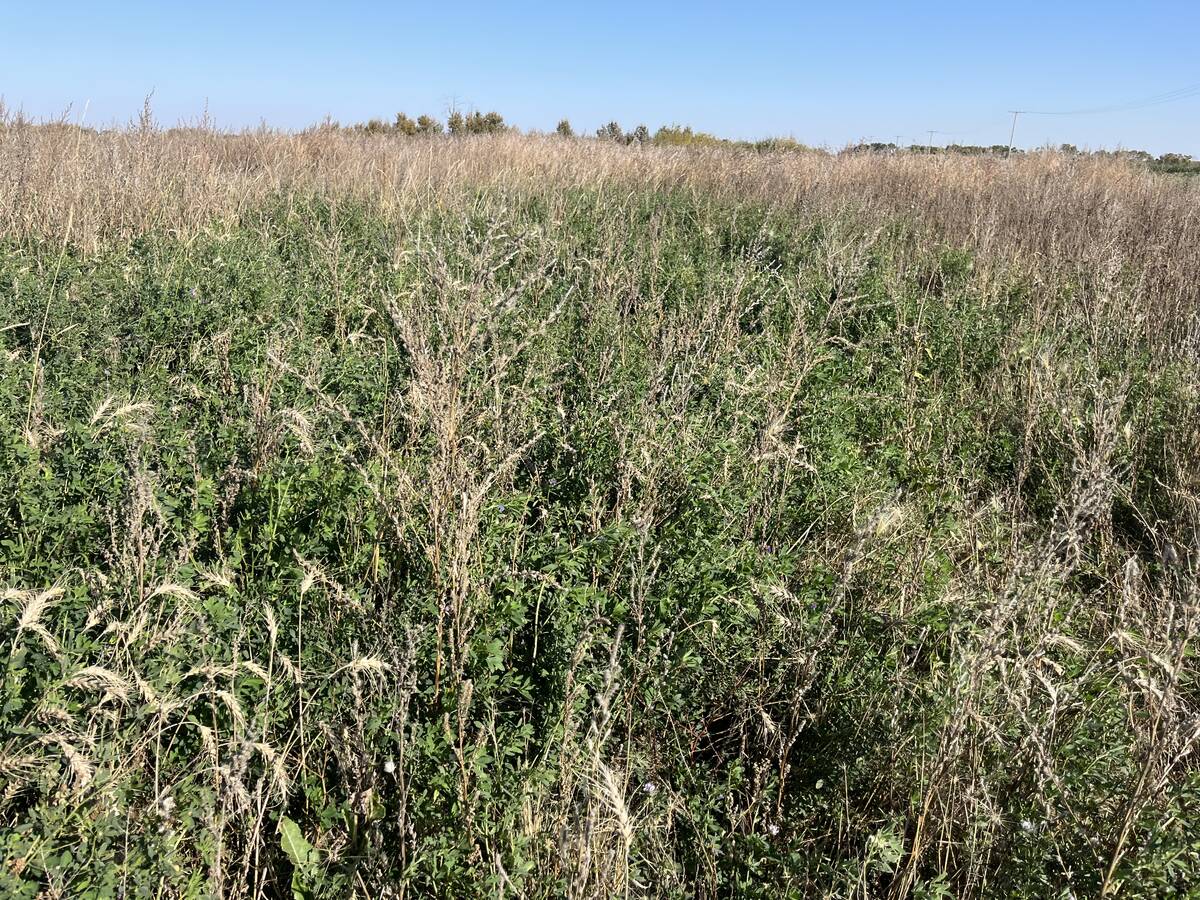DENVER, Colo. — For her first foray into the ring with a new heifer calf, Robyn Tibble decided to enter the National Western Stock Show, which was held in Denver, Colorado, Jan. 12-27.
The tenacious teenager from Swan River, Man., went one step further by entering the highly competitive junior Angus show to compete against about 175 young people from across the United States with expensive calves and professional groomers in the background.
“I always wanted to come here, and I thought it would be a good experience,” she said.
Read Also

Dormant seeding forages frees up farmer time and gets ahead of weeds
Dormant seeding isn’t common practice and can appear daunting, but there are some techniques to give Manitoba farmers an edge
Leading out Burns Moore Dixie Erica 18S3, she stood in the middle of a class of 10, which suited her just fine.
She also placed third in class with the same heifer at the open Angus female sale held Jan. 19.
Tibble owns the 2018 heifer with her sister, Martina. Robyn had seen cattle from the Burns Cattle operation in Iowa and spied the heifer on a farm visit with her father, Scott Tibble.
She and Martina are determined to be self-sufficient as they build their own herd, so this heifer became their responsibility.
“Martina and I had to find our own money. Dad didn’t pay for it,” she said.
“I don’t like my Dad paying for things. I want to have my own farm in the future and you have to start somewhere,” she sad.
The heifer will move to Canada at the end of January and will be bred on the farm. It is descended from a landmark Angus cow named DCC Dixie Erica 001, and part of Burns’ condition of sale was the right to two flushes.
While she was able to work with the heifer over the Christmas holidays, more time will be spent in Manitoba getting ready for a lengthy show year that will end with the Canadian Western Agribition’s First Lady Classic.
The Tibbles use a donkey to train show animals. A harness is strapped to the donkey, and it leads the calf so that it gets used to a halter. Preparation takes time.
“You work with her at least an hour a day whether it is training her or training her hair,” she said.
Robyn is 17 and in Grade 12 and misses school to attend shows, so some catch-up work is done in the barns and hotel rooms as well as online studies.
She also likes teaching younger members through 4-H.
“I like working with the little kids. We put on clinics to show them how to wash them and showmanship,” she said.
With encouragement from her father, she started at the age of seven at the junior Angus level, but things got serious when she was in the sixth grade.
“I didn’t like it at first,” she said.
“If you get an animal that drags you around, you don’t want to go back, but I just kept trying. It’s like a game.”
She plans to attend the Calgary Stampede steer show this summer.
“I like to show in Alberta, but those are the hardest shows in my opinion,” she said.
“The Alberta kids are hard to beat.”
Besides starting her own herd, she has decided to become a serious exhibitor.
“I kicked my dad’s equipment out of the barn and made a show facility and put a wash rack in when Martina and I became more serious,” she said.
Tibble hopes to attend university in the United States. She is considering agri-business and wants to return to the farm after earning a degree.
“Agriculture is a good industry. You have so many job options.”















